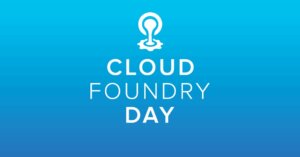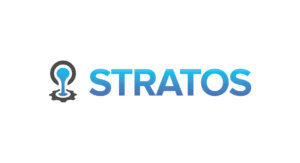Reflecting on this year’s Cloud Foundry Summit in Basel, one of the most exciting aspects of the week was hearing about the momentum within the Cloud Foundry community. It really has taken on a life of its own.
Last year, in my keynote, I asked everyone to imagine what they could achieve with Cloud Foundry. This year, it’s not even a question of imagining—the achievements are in motion. The possibilities we were dreaming of last year are happening right now. And they’re happening at a massive scale.
The excitement around Cloud Foundry, and the momentum that so many enterprise organizations around the world had seen so far, was contagious. In fact, I want to highlight a couple of the speakers from this year’s Summit that really showcase the digital transformation journeys that are well underway.
Kaiserwetter
Philipp Lindner, CIO, Kaiserwetter Energy Asset Management, gave a powerful keynote on how IoT is a driving force to stop climate change.
Kaiserwetter helps companies build an umbrella to manage their wind and solar assets. They’ve been able to leverage technology on their path toward digitization. Their dashboard—dubbed Aristoteles—pulls in a wide range of data, from the company’s renewable energy sites to third-party information, like the weather or financial data, all to provide real-time visibility into energy assets and investments.
What I loved about Philipp’s talk was hearing how they leveraged Cloud Foundry as an innovation platform – to develop and iterate their applications across multiple clouds. Cloud Foundry also gives them the ability to take advantage of other emerging technologies, like AI, ML, and blockchain. All in the name of helping companies invest more in renewables.
To view the talk in full (which I highly recommend!), check out the video here.
Boeing
Enes Yildirim, General Manager of Digital Transformation Environment at Boeing, during a end user panel, discussed how Boeing has focused on culture change within the company.
Enes kicked off the panel by saying that the questions that most concerned him were less about which new technologies to use and more about how to keep the focus on people—how to enable technology that is easy for people to adopt, or as he phrased it, “making technologies that are easy to use and abundantly available.”
I’ve been particularly interested in this topic (see my recent Medium post) as a key component to digital transformation. As I often say, the technology is the easy part, it’s the culture change that’s hard.
What’s especially great about the Boeing story is that we’re talking about culture change across a vast, international company—that’s no small feat! Enes was particularly passionate about digital transformation through the lens of cultural change and creating stronger communication patterns between business units and IT—all of which is essential to taking advantage of what new and emerging technology can deliver.
You can check out the full panel here.
It’s the culture change that is key
Boeing and Kaiserwetter are extremely different companies with distinct goals. But what they have in common is the understanding that a technology like Cloud Foundry can instantiate massive change on a global scale. While Cloud Foundry on its own cannot make the change happen in an organization, it can help facilitate the change. Both Boeing and Kasierwetter were open to a cultural shift inside their walls, and both companies see that their success—whether it be addressing climate change or building the best airplanes—relies on adopting a cloud native mindset.





